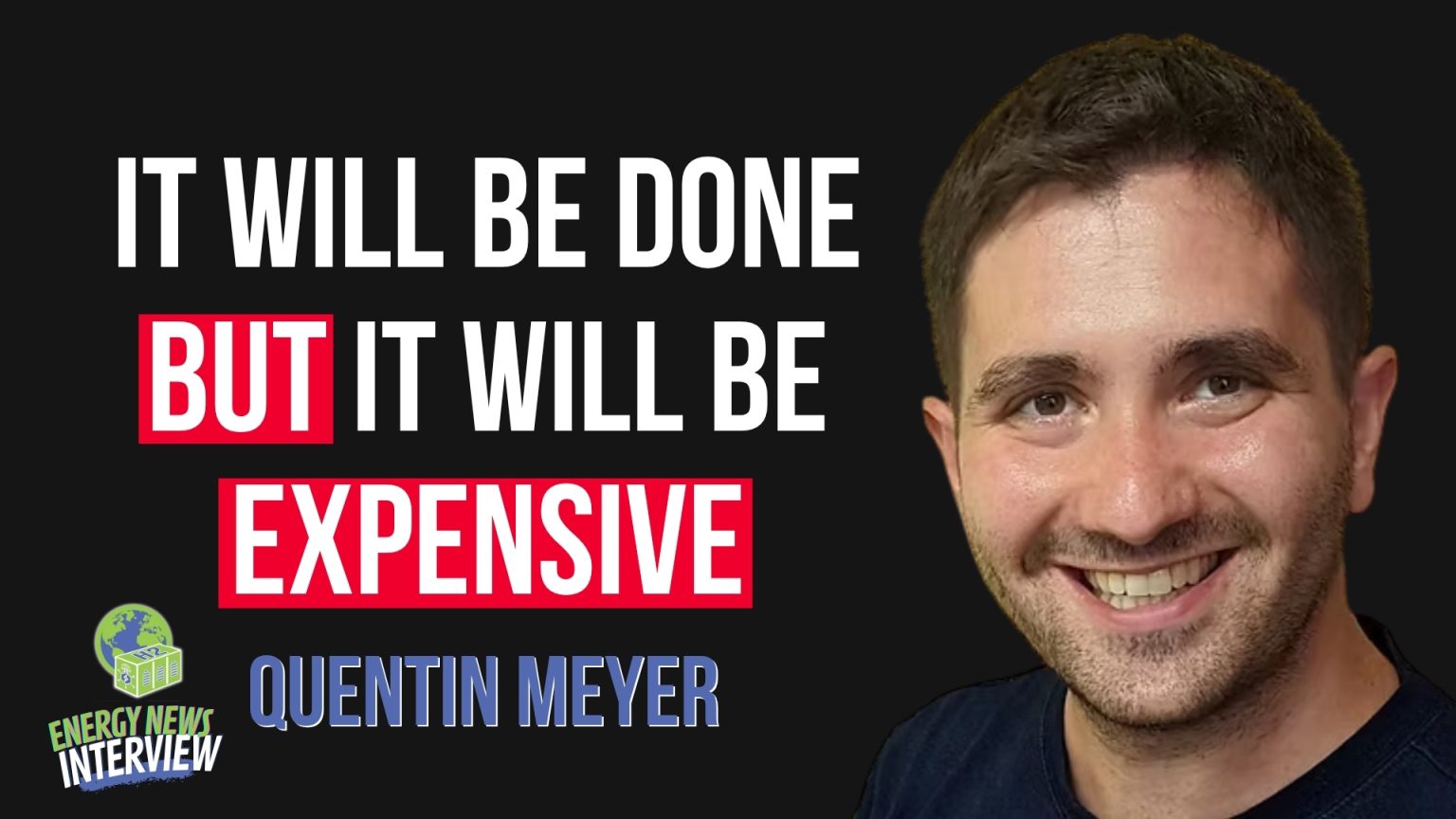In a world supposedly racing toward net zero, one element of the clean energy arsenal still hasn’t left the lab: the hydrogen fuel cell. Despite decades of promises, breakthroughs, and public funding, commercial viability remains elusive. And it may come down to something as fundamental as material limits.
WATCH THE FULL INTERVIEW
“There’s only about 60,000 tons of platinum on Earth,” says Dr. Quentin Meyer, President of the Fuel Cell Division at the International Association for Hydrogen Energy. “That’s nowhere near enough to support a global hydrogen economy.” Platinum, the industry’s catalytic gold standard, is both scarce and expensive. Alternative catalysts—typically based on cheaper metals like iron and carbon—remain unstable, especially under real-world operating conditions.
The challenge is far more than chemical. Fuel cells are complex systems where success depends on architecture as much as ingredients. One critical element is the “triple-phase boundary,” where electrons, protons, and oxygen must simultaneously meet for the electrochemical reaction to occur. A catalyst can be textbook-perfect on paper but fall apart if not engineered to create sufficient triple-phase contact points in practice. “You can have the right material with poor integration and end up with terrible performance,” Meyer explains.
It’s not just about what the fuel cell is made of—it’s also how it’s used. Unlike batteries, fuel cells perform best at steady-state operation. Irregular demand, power fluctuations, or intermittent load profiles—such as those from grids powered by wind or solar—can drastically reduce their lifetime. “The durability may drop from thousands of hours to just a few dozen,” says Meyer.
Material degradation, especially via hydrogen peroxide formation, is another silent killer. Peroxide accelerates both carbon corrosion and the leaching of iron ions in cheaper catalysts. “It’s like pouring gasoline on the fire,” Meyer says. And while researchers like him are getting closer to suppressing peroxide formation through advanced catalyst design, “We still haven’t nailed it.”
One potential breakthrough? Dual-metal catalysts that bond iron with a stabilizer like manganese. The manganese acts as a “chemical bodyguard,” holding the iron in place and reducing its susceptibility to leaching. It’s promising, but far from industrial-ready. “The synthesis process is complex and resource-intensive. We’re talking about a decade away—minimum,” Meyer warns.
The limitations of AI in this space underscore the problem. Despite the hype around machine learning for materials science, Meyer remains skeptical. “You can’t train reliable models with 100 research papers,” he says bluntly. The data volume and variability just aren’t there. AI is helping in niche applications—like imaging analysis—but not yet designing better fuel cells.
Another fundamental barrier is the disconnect between lab innovation and commercial application. Researchers often focus on elegant, unscalable chemistries that get published in Nature but never reach a factory floor. “It’s beautiful science,” Meyer says. “But it’s a scientific curiosity—not a solution.” He argues that more projects need to involve industrial partners from day one to ensure compatibility with future deployment scenarios.
Even when a fuel cell works, the business model often doesn’t. Of the few demonstrations of iron-based catalysts, none are powering more than a small device. Scaling that to fleets or factories requires long-term government support, which is currently lacking. Moreover, off-take remains the economic bottleneck. Industrial hydrogen users—many still reliant on cheap fossil-derived supply—aren’t willing to pay the green premium.
“There’s more supply chain than demand right now,” Meyer notes. “Companies are scaling faster than projects.” And that’s part of a larger truth: hydrogen will never be cost-competitive until materials like platinum and iridium can be replaced—or used at vanishingly low loadings. Until then, the promise of hydrogen fuel cells powering everything from trucks to transcontinental flights remains aspirational.
Meyer is not pessimistic—but he is realistic. “It will be done. But it will be expensive.” The real question isn’t how to build the perfect fuel cell—it’s when we’ll make the investments, coordinate the science with the market, and address the hidden costs that come not from technology, but from timing.





